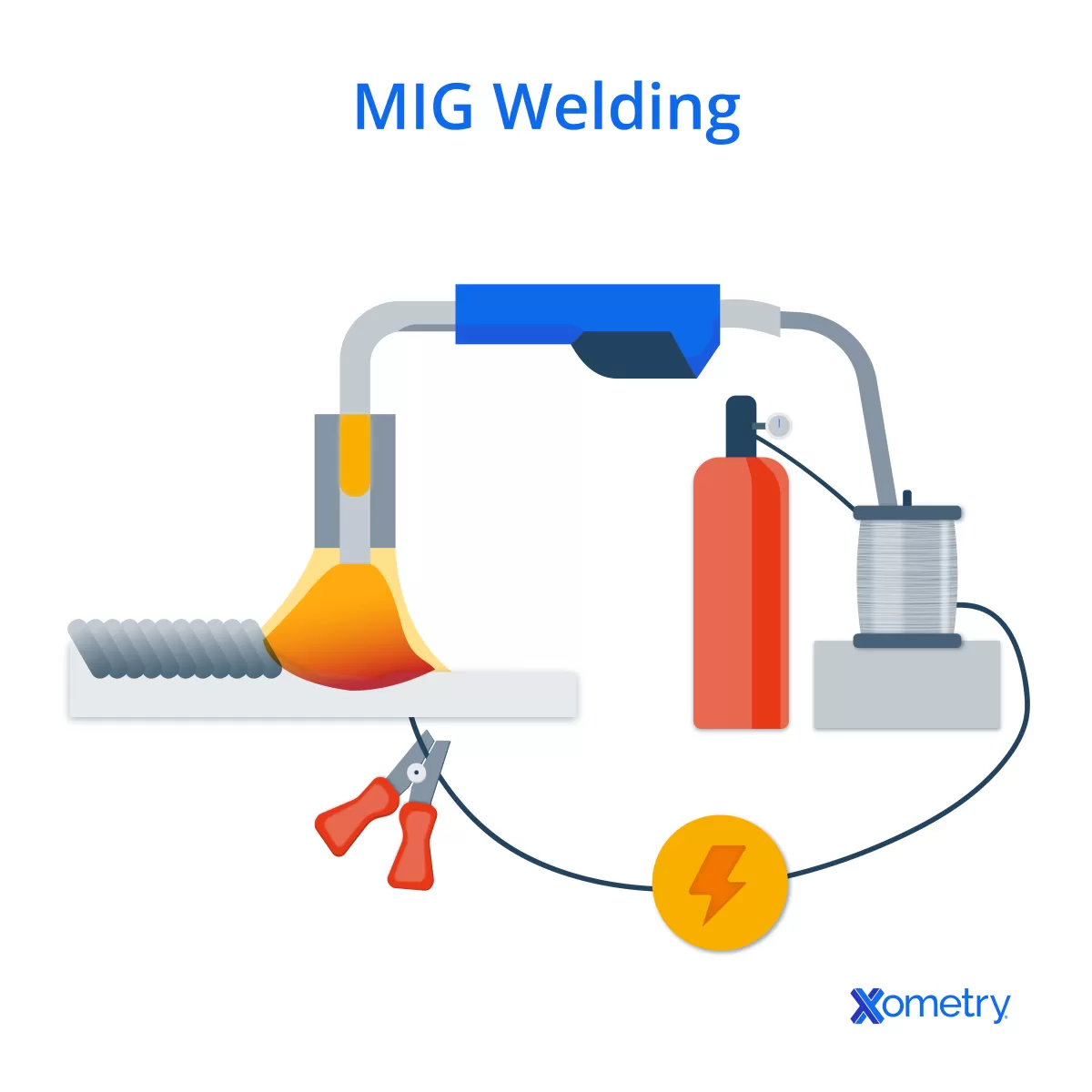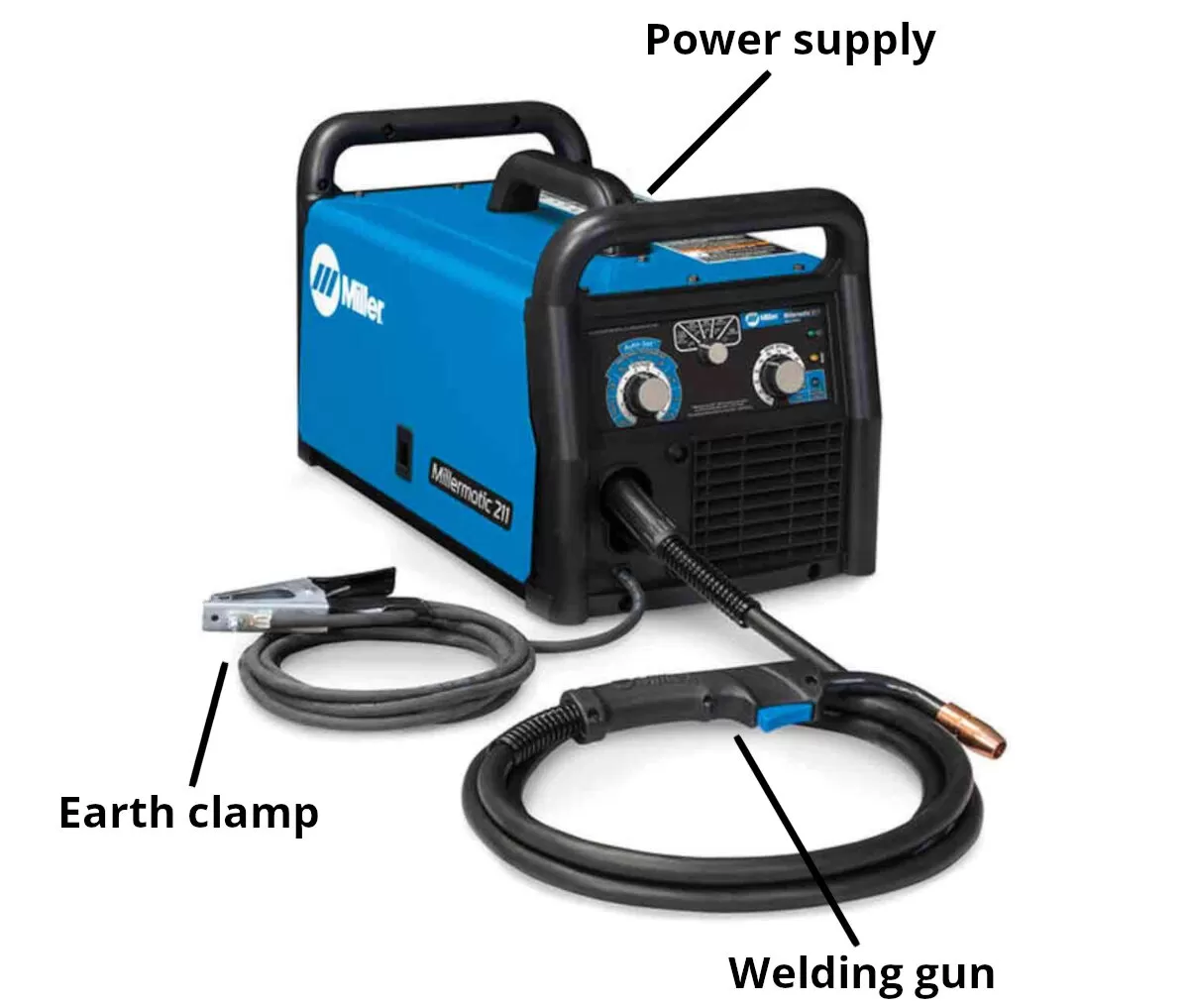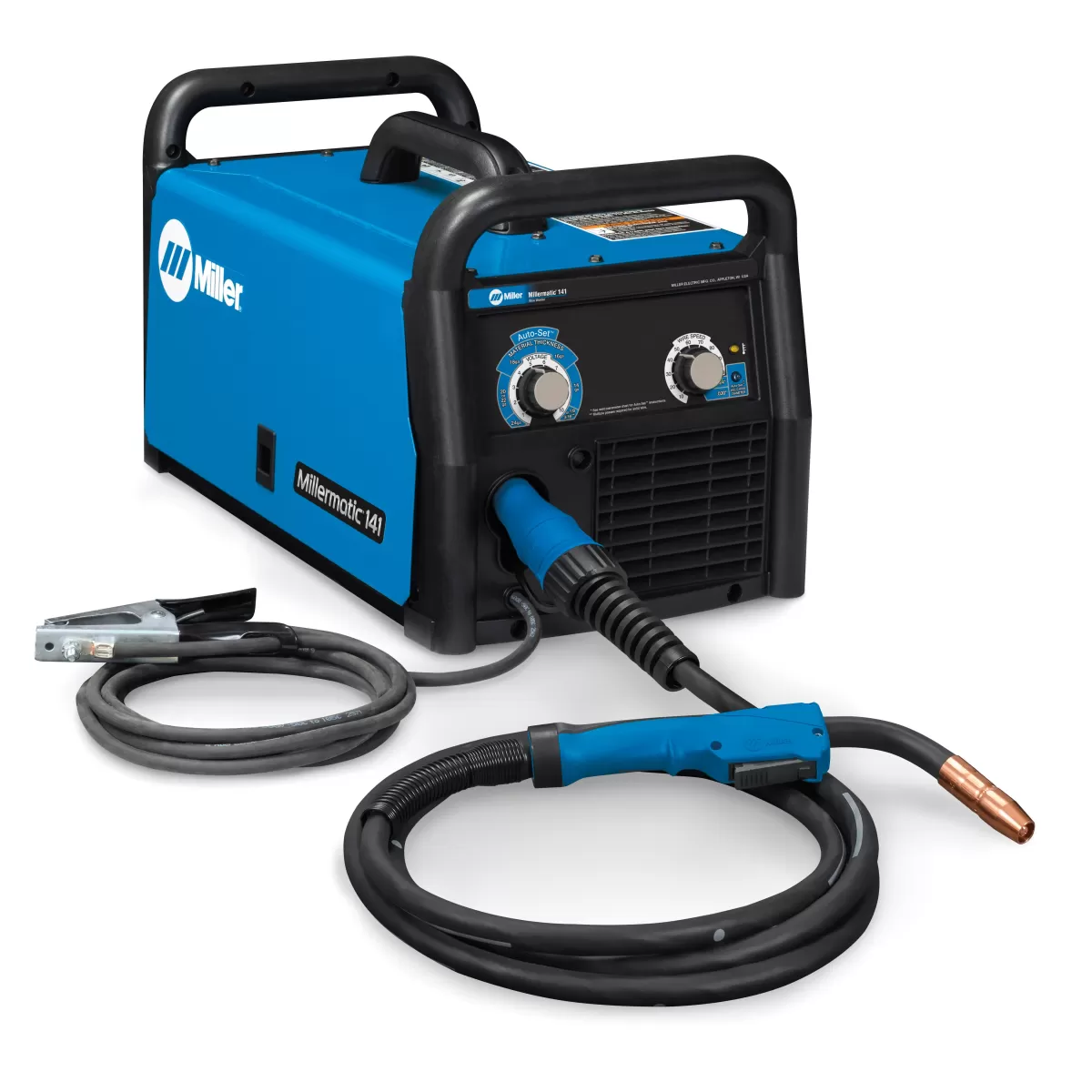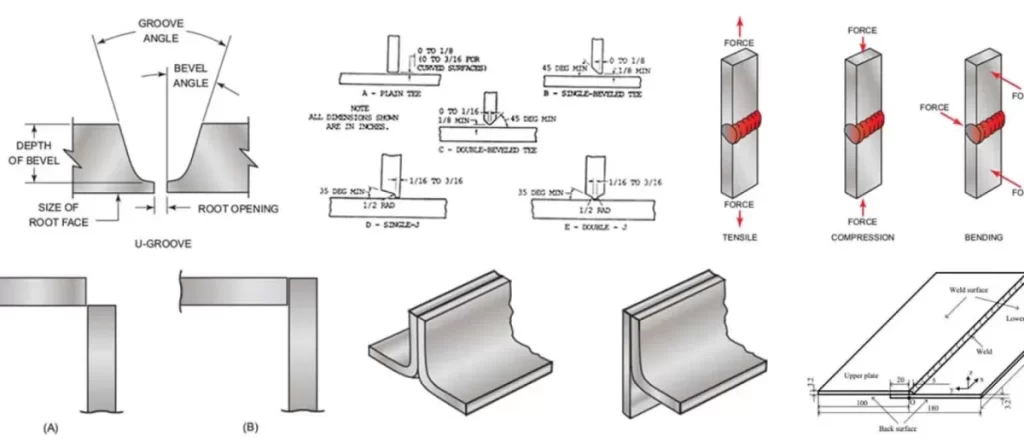What is MIG Welding
MIG welding, or Metal Inert Gas welding, is a popular welding process that uses a continuous wire electrode and an inert shielding gas to join metals. It’s also known as Gas Metal Arc Welding (GMAW). The welder feeds a wire electrode through a welding gun while an inert gas, usually argon or a mix of argon and CO2, protects the molten weld pool from contamination.
Core Components of MIG Welding
- Welder: The power source that provides the correct current to melt the wire.
- Wire Electrode: A consumable metal wire that melts to form the weld.
- Shielding Gas: Inert gases like argon or argon-CO2 blends that protect the weld from oxidation and impurities.
How MIG Welding Works
The welder feeds the wire electrode through the gun at a steady rate. When the wire contacts the metal surface, an electric arc forms between the wire and the workpiece. This arc melts the wire and base metal, fusing them together. The shielding gas flows around the weld, ensuring a clean and strong joint by preventing air contamination.
MIG Welding Compared to TIG and Stick Welding
| Feature | MIG Welding | TIG Welding | Stick Welding |
|---|---|---|---|
| Wire Type | Continuous wire electrode | Tungsten non-consumable | Consumable stick electrode |
| Shielding Gas | Inert gas (argon/CO2 mix) | Pure inert gas (argon) | Flux coating on electrode |
| Ease of Use | Beginner-friendly | Requires skill and practice | Moderate skill needed |
| Speed | Fast and efficient | Slower, precise | Moderate speed |
| Materials | Steel, aluminum, stainless | Steel, aluminum, non-ferrous | Steel and iron |
| Weld Cleanliness | Minimal cleanup | Very clean | More slag to remove |
MIG welding’s simplicity and speed make it a go-to method for many industrial and hobby projects, offering efficiency without sacrificing quality.
Benefits of MIG Welding

MIG welding stands out for its versatility, working well on materials like steel, aluminum, and stainless steel. Whether you’re handling light sheet metal or thicker industrial parts, MIG can manage it effectively. This makes it a favorite across various industries.
Speed is another big plus. MIG welding delivers fast, efficient welds, perfect for high-volume projects where time is money. The continuous wire feed means less downtime compared to stick welding, helping you get the job done quicker.
It’s also user-friendly. Beginners find MIG easier to learn than TIG or stick welding, while pros appreciate how it streamlines the process. The consistent arc and simple controls reduce welding mistakes and improve overall quality.
Plus, MIG welds tend to be clean with minimal slag, cutting down the need for extra cleanup after welding. This saves time and effort, especially on jobs where appearance and finish matter.
These benefits make MIG welding a reliable choice for both DIYers and professionals seeking efficient, quality metal fabrication. For tips on avoiding weld imperfections, check out our guide on welding defects.
Applications of MIG Welding
MIG welding is widely used across different industries because of its speed, accuracy, and clean results. In industrial settings, it’s a go-to method for automotive, aerospace, and construction projects where strong, reliable welds are a must. The versatility of MIG welding works great on various metals, making it ideal for metal fabrication in heavy-duty environments.
At HYCNC, we integrate MIG welding with our CNC machining capabilities to produce precise, consistent parts. This combination helps us deliver high-quality components that fit perfectly and hold up under stress—perfect for clients needing precision welding services.
For DIY enthusiasts and hobbyists, MIG welding is also a popular choice. It’s user-friendly for home repairs, custom builds, and even artistic metalwork. Whether you’re fixing a fence, fabricating a custom frame, or creating a sculpture, MIG welding offers flexibility and control.
Case study: Recently, HYCNC completed a CNC project using MIG welding to build a complex aluminum frame for a client’s prototype. Our CNC machines handled the precision cuts, while MIG welding ensured clean, strong joints with minimal post-weld cleanup. This project showcased how combining CNC and MIG welding can streamline production while maintaining quality.
MIG Welding Techniques and Best Practices
Getting your MIG welding right starts with setting up the equipment properly. Choose a MIG welder that matches your project size and material type—whether it’s a compact unit for DIY jobs or a heavy-duty machine for industrial work. Adjust the voltage and wire feed speed according to the thickness of the metal you’re welding to avoid weld imperfections.
Picking the right wire and shielding gas is just as important. For most steel projects, a CO2 or argon-CO2 mix works well. Aluminum typically needs pure argon for better weld quality. The gas protects the weld from contaminants, giving you clean and strong joints.
When welding, your technique matters. Decide between the push or pull method: pushing the gun moves the weld pool slowly and helps with thinner metals, while pulling can be better for deeper penetration on thicker pieces. Keep the gun at about a 10-15 degree angle and maintain a steady speed to ensure smooth, consistent welds.
Safety can’t be overlooked. Always wear protective gear—welding helmet, gloves, and flame-resistant clothing. A well-ventilated workspace keeps fumes away, and fire prevention measures like having a fire extinguisher nearby are a must. Following these best practices makes MIG welding safer and helps you get top-quality results every time.
Choosing MIG Welding Services or Equipment

Deciding whether to tackle MIG welding yourself or hire pros depends on your project size, skill level, and equipment access. For small home repairs or DIY welding projects, a basic MIG welder might do the job. But for complex or large-scale work, like precision parts or industrial fabrication, hiring experts like HYCNC’s CNC services is a smart move.
When picking a MIG welder, keep these key factors in mind:
- Power and output: Make sure the welder matches the material thickness and type you’ll be working on.
- Portability: If you need mobility for onsite jobs, choose a compact, lightweight machine.
- Brand reliability: Go with trusted brands known for durability and solid customer support.
- Ease of use: Look for models with adjustable settings and clear controls to avoid weld imperfections.
HYCNC stands out by integrating CNC technology with MIG welding, delivering unmatched precision and repeatability. This means every weld is consistent, scalable, and tailored to meet strict industrial standards. Plus, HYCNC offers custom solutions designed for a range of industries, making them a go-to for businesses needing reliable metal fabrication and CNC welding services.
Whether you need a one-off job or ongoing industrial welding support, HYCNC’s expertise ensures your project is handled efficiently and accurately.
Local MIG Welding Solutions with HYCNC
When it comes to MIG welding, having local expertise makes a big difference for both businesses and hobbyists in the United States. Whether you’re working on industrial projects or DIY builds, local support means faster turnaround, personalized service, and solutions that fit your unique needs.
At HYCNC, we specialize in providing tailored CNC welding services across [insert target region]. Our combination of precision CNC machining and MIG welding lets us deliver high-quality, consistent results for everything from metal fabrication to custom parts. We understand local requirements and adjust our processes to ensure top performance and durability, no matter the project size.
If you’re looking for reliable MIG welding solutions near you, reach out to HYCNC. We offer consultations to assess your needs and provide accurate quotes so you get the right service without delays or surprises. Our local team is ready to support your next project with expert CNC-integrated MIG welding.
FAQs About MIG Welding
What materials can be welded with MIG welding
MIG welding works great on a variety of metals including steel, aluminum, and stainless steel. It’s versatile enough for most common metals used in automotive, industrial, and DIY projects.
How does MIG welding compare to TIG welding
MIG welding is faster and easier to learn, making it perfect for high-volume jobs. TIG welding offers more precision and cleaner welds but takes longer and requires more skill. For most general purposes, MIG is the go-to choice.
Why choose HYCNC for MIG welding services
At HYCNC, we combine MIG welding with CNC precision. This means highly repeatable, accurate welds suitable for industrial needs or custom projects. Our local expertise and modern equipment ensure quality and quick turnaround.
What safety precautions are needed for MIG welding
Safety first: always wear proper protective gear like welding helmets, gloves, and flame-resistant clothing. Use proper ventilation to avoid fumes, and keep fire prevention tools nearby when welding.
Can HYCNC handle large-scale industrial welding projects
Absolutely. HYCNC is equipped to manage large and complex jobs, integrating CNC controls for precise, scalable welding solutions that meet industrial standards. We’re ready to support businesses with demanding welding needs.




